North America Trade Data
NORTH AMERICA CURRENT MARKET GROWTH
The commercial environment in North America saw significant changes in 2024. According to North America Trade Data, the United States had a $5.22 trillion total merchandise trade volume, with imports exceeding $3.27 trillion and exports coming to over $2.06 trillion. As a result, the trade deficit reached $1.2 trillion, surpassing $1 trillion for the third time in four years.
Canada's trade deficit was decreasing; March 2025 data indicated a deficit of C$506 million, which was far less than the projected C$1.56 billion. This improvement was mostly brought about by a greater drop in imports, which dropped 1.5% to C$70.40 billion, as opposed to a lesser dip in exports, which dropped to C$69.9 billion, according to North America Import Export Data From Import Globals.
According to Import Globals' North America Customs Data, the World Trade Organization forecasted a moderate 1.0% increase in imports and a 3.6% growth in North America's merchandise exports in 2024. These numbers show how the continent's trade performance was affected during the year by larger economic activity and trade regulations proven in North America Trade data analysis.
NORTH AMERICA Geography and its supply chain/trade relations with nearby countries.
The location of North America significantly influences the dynamics of its supply chain and trade, particularly with neighboring nations. The United States, Canada, and Mexico are the continent's main economic partners. They are all connected by extensive land borders and strong transportation networks. The continent is bounded by the Pacific and Atlantic Oceans. The United States and Canada have one of the longest and busiest land borders in the world, which facilitates a highly connected supply chain, especially in industries like energy, automotive, and agriculture, according to North America Import Data provided by Import Globals.
In the meantime, a lot of manufacturing and assembly activity occurs along the U.S.-Mexico border, and many American businesses depend on Mexico's maquiladora system for affordable output. Under the USMCA (United States–Mexico–Canada Agreement), which superseded NAFTA and updated trade regulations to better suit the modern, digital, and service-oriented economy, the three countries are connected. Furthermore, according to North America Export Data From Import Globals, North America's trade routes are facilitated by its closeness to Latin American markets and significant ports on both coasts, making it a major worldwide hub for logistics and distribution. North America is a key participant in global supply chains due to its geographic advantage, free trade agreements, and cross-border infrastructure.
Overall contribution of NORTH AMERICAN countries' trade in the world in percentage.
According to North America Trade Data, with over 16.1% of the world's total trade value in 2024, North America made a substantial contribution to global trade. North America's portion highlights its crucial role in global trade, which reached a record $33 trillion. The United States led the region with a total merchandise trade volume of $5.22 trillion, which included imports over $3.27 trillion and exports of roughly $2.06 trillion, according to the North America Importers Data From Import Globals. Significant contributions were also made by Canada and Mexico, whose $839.89 billion in commerce with the United States alone made it the country's top trading partner for the second year in a row as per North America Trade Data. These numbers demonstrate North America's crucial role in international commerce networks, which is fueled by thriving economies and solid transcontinental alliances.
Mexico, the United States, Costa Rica, Panama, Nicaragua, Guatemala, and many other North American nations are covered by Import Globals' most exclusive and comprehensive North America Export Data, which provides in-depth information on their import-export dynamics and market trends.
The North America Import Export Trade Data by Import Globals, includes all essential information such as the importer's and exporter's company names, FOB value, CIF value, invoice value, port of loading, port of unloading, destination country, origin country, HS code, product description, and more, ensuring a comprehensive overview of each trade transaction.

- Importer company name
- Exporter company name
- FOB (Free on Board) value
- CIF (Cost, Insurance, and Freight) value
- Invoice value
- Port of loading
- Port of unloading
- Destination country
- Origin country
- HS (Harmonized System) code
- Product description and many more
TOP 10 North America Export Products : North America Trade Data
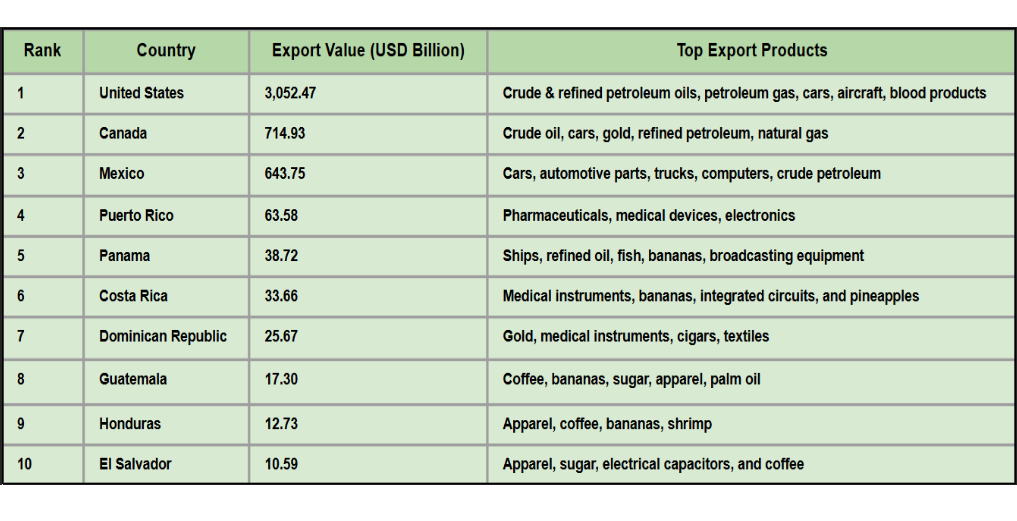
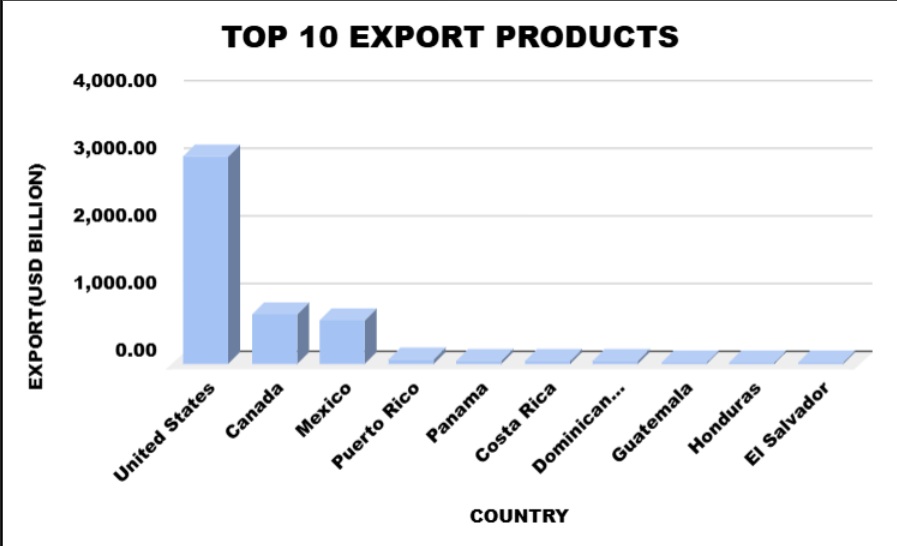
TOP 10 North America Import Products : North America Trade Data
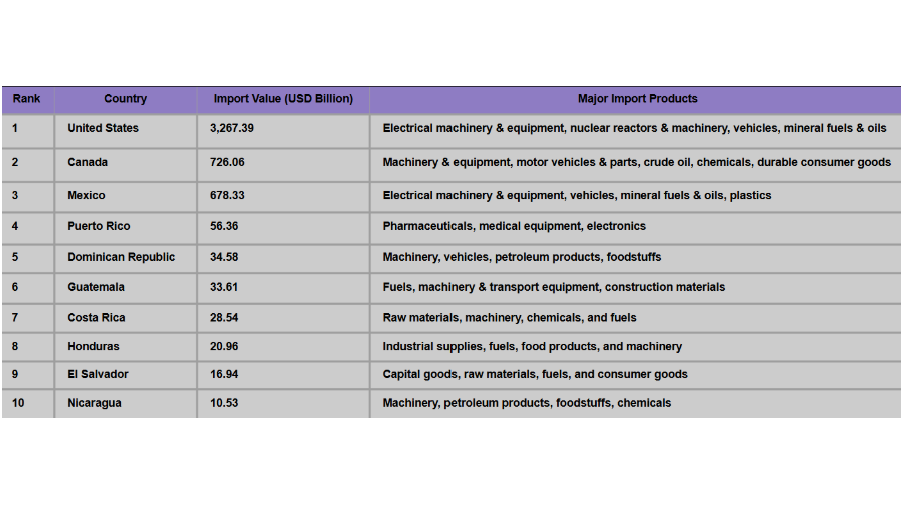

TOP 10 Exporting Trading Partners : North America Export Data

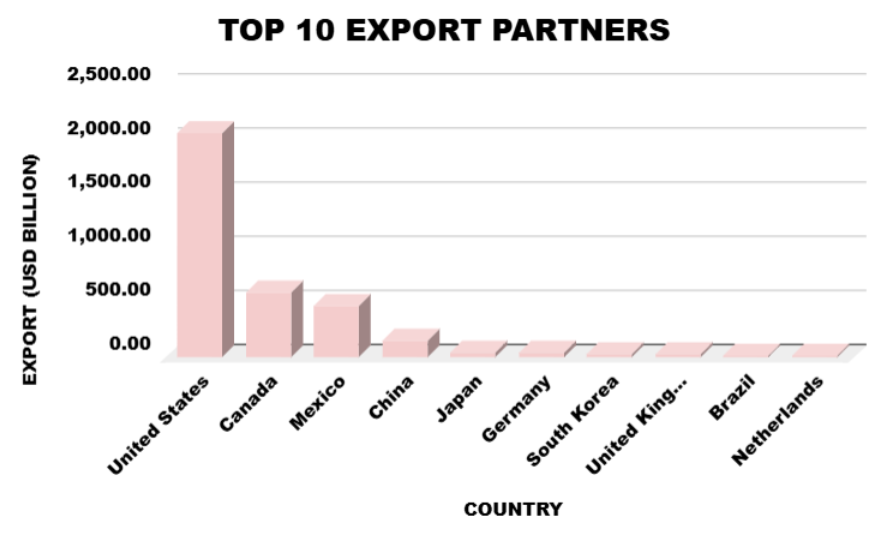
TOP 10 Importing Trading Partners : North America Import Data
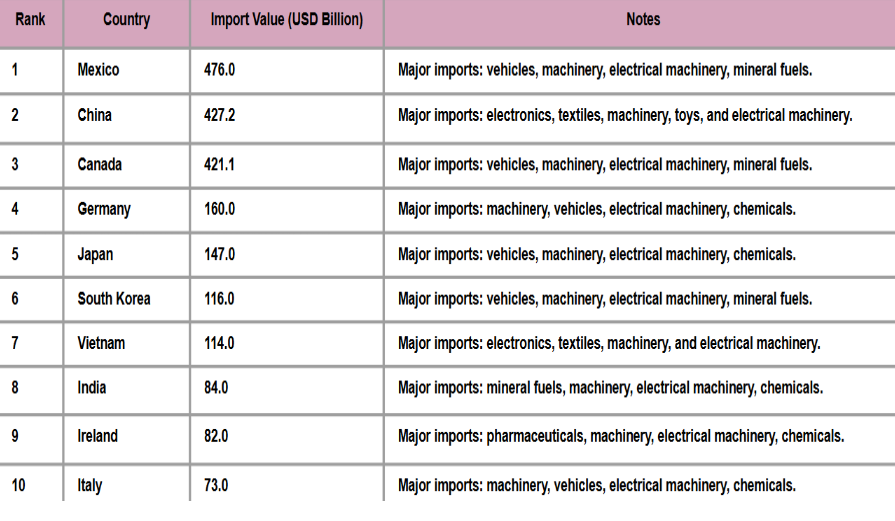
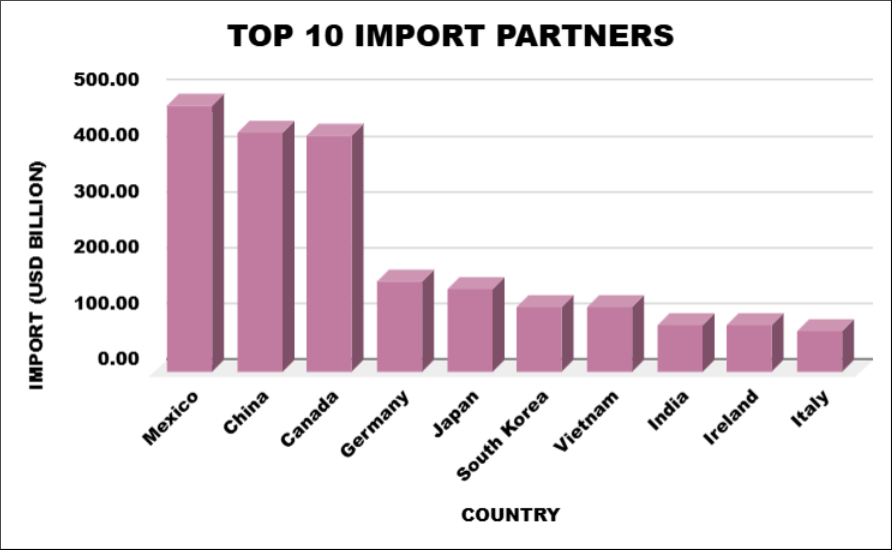
To gain deeper insights into the import-export data of North American countries, you can subscribe to platforms like Import Globals. These platforms provide comprehensive access to trade statistics, offering data on product imports and exports, key trade partners, and market trends. With a subscription, you'll be able to track vital information on trade flows, monitor industry-specific trends, and make data-driven decisions for business growth and market expansion.
UNLOCK COMPREHENSIVE INSIGHT INTO NORTH AMERICA TRADE DATA IMPORT EXPORT DATA BY SUBSCRIBING TO IMPORT GLOBALS PLATEFORM!
- Customs Report
- Statistical Report
